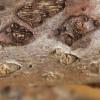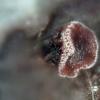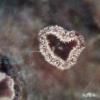
17-03-2016 09:01
Salvador TelloHola a todos.Tengo estos hongos recogidos creciend

16-03-2016 19:00
 Edit Szilvásy
Edit Szilvásy
Hi all, I found today this ascomycete growing on c

17-03-2016 10:07
Dear friends, One or the other of you may be inte

14-03-2016 18:03
Someone can send me the following literature:Hilbe

16-03-2016 16:18
Jacky LaunoySalut tout le monde,Y-a-t-il quelqu'un qui puisse

15-03-2016 13:25
 ACAR ismail
ACAR ismail
Hi all,This species found on remnants of Crataegus

16-03-2016 00:58
Eike HeinemannHello again,this species i found in october on Bor

16-03-2016 00:49
Eike HeinemannHello together,this aquatic species i found in sum
Tiny ascocarps with bended hairs
Koszka Attila,
02-01-2024 18:41
Hello all!
I don't even get to the genus with this tiny ascos. On a Fraxinus twig, the size is about 1 mm. The hair-like elements on the outer side are characteristically slender, smooth and bended. The excipular layer is red, made of rather angular cells. Asci small, base not hooked, clearly inamiloid (tested with lugol). Spores smooth and hyaline, 6,5-7,5x2,6-2,8 um, with two developed droplets. Paraphyses simple, without guttulation.
In companion with Massaria and Diatrypella.
Thank you for any help!
Nicolas VAN VOOREN,
02-01-2024 18:46

Re : Tiny ascocarps with bended hairs
This is an Unguilariopsis species.
Lothar Krieglsteiner,
02-01-2024 18:50

Re : Tiny ascocarps with bended hairs
Unguiculariopsis :-)
Koszka Attila,
02-01-2024 18:55
Re : Tiny ascocarps with bended hairs
Wow, thanks!
It looks like U. robergei complex... of course now it's much easier that way :-)








